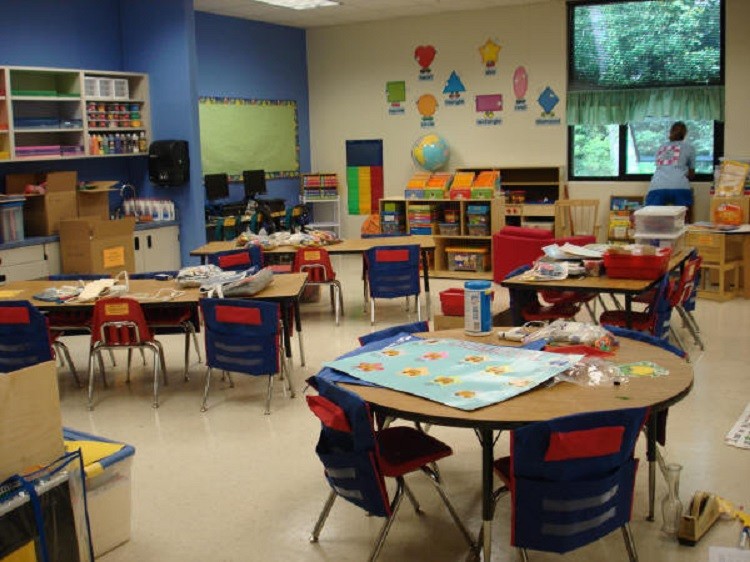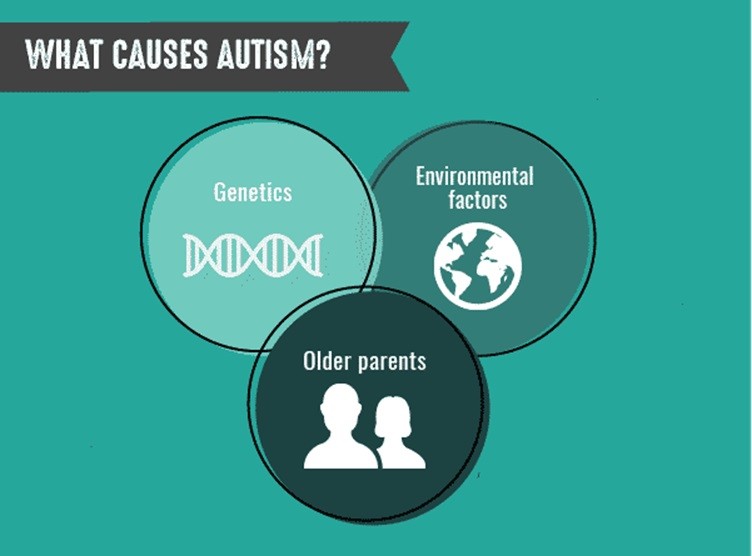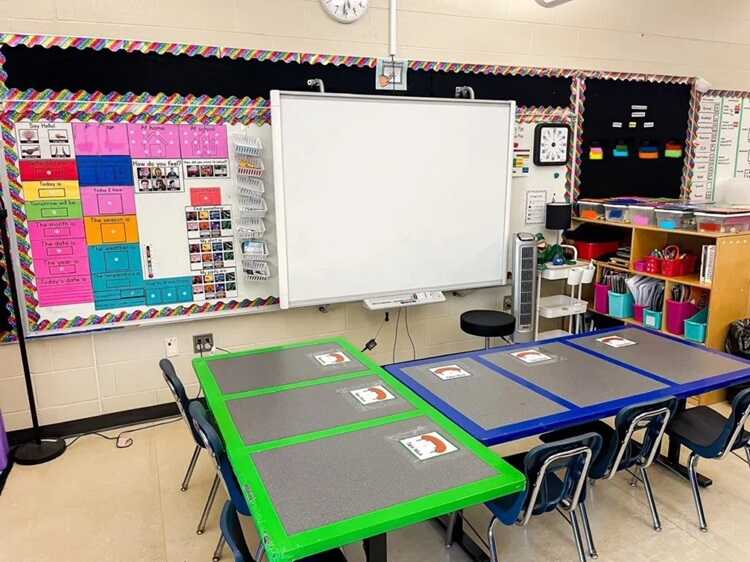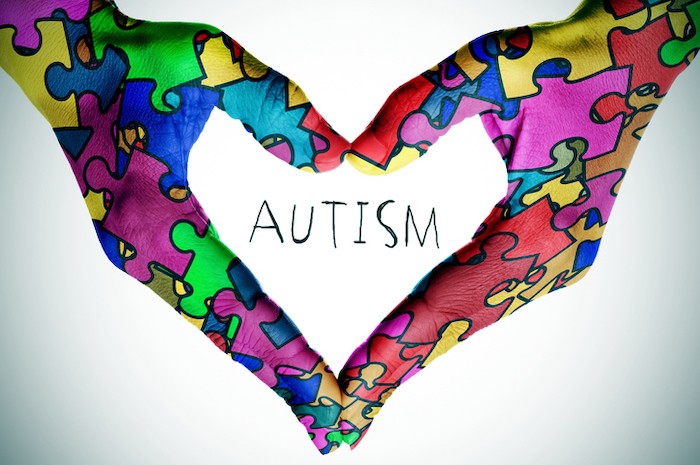Strategies for autism in the classroom
Each student with autism is unique, and therefore, each student will have unique needs in the classroom. However, many strategies and basic principles of effective instruction can be implemented for students with autism within the classroom. Many of these strategies provide structure and teach a variety of skills across content areas of the natural and traditional classroom setting. These include:
- Strategies for Success
- Ways autism impacts learning
- Strategies for autism classroom set-up
- Sensory activities for autism in the classroom
- How LeafWing Center Prepares Children for Classroom Success
Every autistic child learns differently. But one consistent truth? Structure and clarity unlock their potential. This guide outlines strategies for autism in the classroom — backed by expertise, research, and LeafWing’s proven methods.

Autism in the classroom: strategies for success
- Assignment Notebooks
- Structured Routines
- Classroom Environment
- Clear Communication
Students with autism can thrive in the classroom with a few strategies for success. One of the ways to do this is with an assignment notebook. An assignment notebook is an easy way to have a visual for students to be able to know and understand what is expected of them and what is coming up next in class.
Another strategy is through a structured routine. A structured routine is a great strategy for success for autism in the classroom. Routines are necessary for all students, particularly those with autism. A routine allows for consistency and for a student to know what is coming next. Change is bound to happen at school once in a while, with substitute teachers, fire drills, etc. Change can be difficult and a barrier in the classroom for students with autism, so keeping things the same most of the time will lead to success in the classroom setting.
The classroom environment itself is also a strategy for success for students with autism. Structure and predictability facilitate the student’s understanding of the environment, which can help decrease worry or agitation the student might have. This is really important for students with autism who tend to react negatively or really have a difficult time with changes and unexpected uncertainty in their environment. These types of students are often overwhelmed by sensory stimuli. Therefore, an overload of sensory stimuli at once can be very stressful and cause a negative reaction within the classroom. By limiting loud noises, certain light frequencies, textures, and control of temperature, the classroom can become a great place for a student with autism to learn and be successful.
The last key to strategies for success for autism in the classroom is communication. As with routines, clear communication is important to all students, but is a significant necessity for students with autism. Keeping directions clear and simple prevents any confusion from occurring and allows students with autism to process instructions easily. Students with autism oftentimes do not understand common phrases or figurative language, so communicating in a direct manner with short tasks allows for the student to process and complete the task in a timely manner.

Ways Autism impacts Learning in the classroom
Autism impacts learning in many ways. Students with autism have difficulty adapting their behavior to different situations. When there is a change in their normal routine or something is out of the ordinary, it can be highly stressful for students with autism. They also have challenges socially interacting with others. In lower elementary grades, oftentimes, learning occurs through play with other students. This can be an obstacle for students with autism. Some students with autism need to be moving in order to learn. This can pose an issue in the general education classroom setting because of space constraints as well as the possibility of distracting other students.
Strategies for autism classroom set-up
One of the main strategies for a classroom setup for students with autism is to label materials and spaces. Setting up the classroom a certain way can increase a student with autism’s ability to be successful in the classroom setting. We can help students understand expectations and, in general, make sense of their entire environment. Researchers have defined environmental support as “aspects of the environment, other than interactions with people, which affect the learning that takes place.”
Predictability and sameness are significant factors throughout students’ daily lives. One way to address these elements in the classroom is with “Environmental Supports.”
Examples of environmental support
- Labels
- Boundary settings
- Visual schedules
- Behavior-based education tools
- Activity completion signals
- Choice boards
Students with autism can get overwhelmed easily or become overstimulated. Have a designated calm-down area. When the instances occur, it is easier for everyone if there is a designated area for the student to go to aid in their self-regulation. The space should be quiet and include items they may use to help calm down and re-focus themselves.
All of these environmental support strategies are a simple yet effective way to help a student respond appropriately in their day-to-day activities throughout their school day. Environmental support can be effectively utilized across all environments and all settings to help support individuals with ASD. Additionally, environmental support has been shown to increase student independence and help stimulate language.

Sensory activities strategies for students with autism to help with focusing in the classroom
Sensory activity strategies for students with autism can help to minimize the feeling of being overstimulated. However, there are activities within the classroom setting that can help students still experience sensory input and learn while doing so. Targeted sensory activities can aid a student with autism in the classroom in staying grounded and focused, as well as fulfilling their need for movement.
Some sensory activities can include:
- Stamping on Paper
- Slime Play
- Fidget Toys
- Using shaving cream for letters or math
- Rhythm instruments
- Finger painting
- Playdough
Students with autism may struggle with these types of play. The goal is to determine the unique needs of each student with autism. Some sensory experiences are calming and successful for one student but may be extremely overstimulating for another. However, once the best sensory play is found for a student, it can really open the door and decrease some of the learning challenges. Sensory activities can improve social skills, hand-eye coordination, as well as fine motor skills. It can also help to challenge a student’s brain that they typically do not use, and be a key to being successful in the classroom setting.
Again, we want to emphasize that each student is unique, and the strategies used need to reflect their unique needs.
Key Takeaways
- Establish Consistent Routines: Students with autism benefit from predictable schedules, which help reduce anxiety associated with unexpected changes.
- Create a Structured Environment: Organize the classroom to minimize sensory overload by controlling factors like noise, lighting, and temperature. Clearly defined spaces and labeled materials can aid in understanding expectations.
- Use Assignment Notebooks: Providing visual tools, such as assignment notebooks, helps students track tasks and upcoming activities, fostering independence and organization.
- Simplify Communication: Deliver clear, concise instructions using straightforward language to ensure comprehension, as students with autism may struggle with figurative speech.
- Incorporate Sensory Activities: Integrate sensory-friendly activities to accommodate students who may need movement or specific sensory input to focus and learn effectively.
How LeafWing Center Prepares Children for Classroom Success
At LeafWing Center, we understand that the classroom environment can be both exciting and overwhelming for children with autism. Our team of Board Certified Behavior Analysts (BCBAs) and trained therapists works with families to:
- Build School-Ready Routines – We practice structured schedules so children can transition smoothly into a classroom setting.
- Create Personalized Visual Supports – From assignment notebooks to social stories, we tailor tools to each child’s needs.
- Develop Sensory Coping Skills – We introduce sensory strategies that help children manage overstimulation.
- Collaborate with Teachers and Parents – We ensure strategies are carried over into the school environment for consistent support.
This holistic approach ensures that children arrive at school confident, prepared, and ready to learn.
Teaching a child with autism requires patience, structure, and creativity. With the right strategies — and by fostering collaboration between teachers, parents, and caregivers — we can build classrooms where every student feels safe, supported, and capable of success.
If you’re preparing your child for school, LeafWing Center can help you put the right supports in place before the first day of class. Together, we can make the transition a positive and empowering experience.
Our goal is to facilitate a smooth transition into the classroom, ensuring that the strategies established by our ABA therapists are reinforced and supported by educators. Together, we can create a supportive learning environment that empowers your child to thrive.
Related Glossary Terms:
- Fine Motor Skills
- Inclusive Classroom
- Main-stream
- Self-contained Classroom
- Sensory Integration
- Transitions
Other Related Articles:
- Choice Boards and “Wait” support for students with autism in the classroom
- Supporting students with autism in the classroom with an assignment notebook
- Graphic organizers for students with autism
- Autism and Communication Difficulties
- Using Time Warnings to help students with autism
- Using activity completion signals to support students with autism in the classroom setting
- Using mini schedules and task organizers to help students with ASD in classroom settings
- Classroom Boundary Markers for Autistic Students
- Transition strategies for autistic students
Frequently asked questions about ABA therapy
What is ABA Therapy used for?
ABA-based therapy can be used in a multitude of areas. Currently, these interventions are used primarily with individuals living with ASD; however, their applications can be used with individuals living with pervasive developmental disorders as well as other disorders. For ASD, it can be used in effectively teaching specific skills that may not be in a child’s repertoire of skills to help him/her function better in their environment whether that be at home, school, or out in the community. In conjunction with skill acquisition programs, ABA-based interventions can also be used in addressing behavioral excesses (e.g., tantrum behaviors, aggressive behaviors, self-injurious behaviors). Lastly, it can also be utilized in parent/caregiver training.
In skill acquisition programs, a child’s repertoire of skills is assessed in the beginning phase of the services in key adaptive areas such as communication/language, self-help, social skills, and motor skills as well. Once skills to be taught are identified, a goal for each skill is developed and then addressed/taught by using ABA-based techniques to teach those important skills. Ultimately, an ABA-based therapy will facilitate a degree of maintenance (i.e., the child can still perform the learned behaviors in the absence of training/intervention over time) and generalization (i.e., the learned behaviors are observed to occur in situations different from the instructional setting). These two concepts are very important in any ABA-based intervention.
In behavior management, the challenging behaviors are assessed for their function in the beginning phase of the services. In this phase, the “why does this behavior happen in the first place?” is determined. Once known, an ABA-based therapy will be developed to not just decrease the occurrence of the behavior being addressed, but also teach the child a functionally-equivalent behavior that is socially-appropriate. For example, if a child resorts to tantrum behaviors when she is told she cannot have a specific item, she may be taught to accept an alternative or find an alternative for herself. Of course, we can only do this up to a certain point—the offering of alternatives. There comes a point when a ‘no’ means ‘no’ so the tantrum behavior will be left to run its course (i.e., to continue until it ceases). This is never easy and will take some time for parents/caregivers to get used to, but research has shown that over time and consistent application of an ABA-based behavior management program, the challenging behavior will get better.
In parent training, individuals that provide care for a child may receive customized “curriculum” that best fit their situation. A typical area covered in parent training is teaching responsible adults pertinent ABA-based concepts to help adults understand the rationale behind interventions that are being used in their child’s ABA-based services. Another area covered in parent training is teaching adults specific skill acquisition programs and/or behavior management programs that they will implement during family time. Other areas covered in parent training may be data collection, how to facilitate maintenance, how to facilitate generalization of learned skills to name a few.
There is no “one format” that will fit all children and their families’ needs. The ABA professionals you’re currently working with, with your participation, will develop an ABA-based treatment package that will best fit your child’s and your family’s needs. For more information regarding this topic, we encourage you to speak with your BCBA or reach out to us at info@leafwingcenter.org.
Who Can Benefit From ABA Therapy?
There is a common misconception that the principles of ABA are specific to Autism. This is not the case. The principles and methods of ABA are scientifically backed and can be applied to any individual. With that said, the U.S. Surgeon General and the American Psychological Association consider ABA to be an evidence based practice. Forty years of extensive literature have documented ABA therapy as an effective and successful practice to reduce problem behavior and increase skills for individuals with intellectual disabilities and Autism Spectrum Disorders (ASD). Children, teenagers, and adults with ASD can benefit from ABA therapy. Especially when started early, ABA therapy can benefit individuals by targeting challenging behaviors, attention skills, play skills, communication, motor, social, and other skills. Individuals with other developmental challenges such as ADHD or intellectual disability can benefit from ABA therapy as well. While early intervention has been demonstrated to lead to more significant treatment outcomes, there is no specific age at which ABA therapy ceases to be helpful.
Additionally, parents and caregivers of individuals living with ASD can also benefit from the principles of ABA. Depending on the needs of your loved one, the use of specified ABA techniques in addition to 1:1 services, may help produce more desirable treatment outcomes. The term “caregiver training” is common in ABA services and refers to the individualized instruction that a BCBA or ABA Supervisor provides to parents and caregivers. This typically involves a combination of individualized ABA techniques and methods parents and caregivers can use outside of 1:1 sessions to facilitate ongoing progress in specified areas.
ABA therapy can help people living with ASD, intellectual disability, and other developmental challenges achieve their goals and live higher quality lives.
What does ABA Therapy look like?
Agencies that provide ABA-based services in the home-setting are more likely to implement ABA services similarly than doing the same exact protocols or procedures. Regardless, an ABA agency under the guidance of a Board-Certified Behavior Analyst follows the same research-based theories to guide treatment that all other acceptable ABA agencies use.
ABA-based services start with a functional behavior assessment (FBA). In a nutshell, a FBA assesses why the behaviors may be happening in the first place. From there, the FBA will also determine the best way to address the difficulties using tactics that have been proven effective over time with a focus on behavioral replacement versus simple elimination of a problem behavior. The FBA will also have recommendations for other relevant skills/behaviors to be taught and parent skills that can be taught in a parent training format to name a few. From there, the intensity of the ABA-based services is determined, again, based on the clinical needs of your child. The completed FBA is then submitted to the funding source for approval.
One-on-one sessions between a behavior technician and your child will start once services are approved. The duration per session and the frequency of these sessions per week/month will all depend on how many hours your child’s ABA services have been approved for—usually, this will be the number recommended in the FBA. The sessions are used to teach identified skills/behaviors via effective teaching procedures. Another aspect of ABA-based services in the home-setting is parent training. Parent training can take many forms depending on what goals have been established during the FBA process. The number of hours dedicated for parent training is also variable and solely depends on the clinical need for it. If a 1:1 session is between a behavior technician and your child, a parent training session or appointment is between you and the case supervisor and with and without your child present, depending on the parent goal(s) identified. Parent training service’s goal is for you to be able to have ample skills/knowledge in order for you to become more effective in addressing behavioral difficulties as they occur outside of scheduled ABA sessions. Depending on the goals established, you may be required to participate in your child’s 1:1 sessions. These participations are a good way for you to practice what you have learned from the case supervisor while at the same time, having the behavior technician available to you to give you feedback as you practice on those new skills.
As mentioned in the beginning, no two ABA agencies will do the same exact thing when it comes to providing ABA services; however, good agencies will always base their practice on the same empirically-proven procedures.
How do I start ABA Therapy?
In most cases, the first item required to start ABA therapy is the individual’s autism spectrum disorder (ASD) diagnosis report. This is typically conducted by a doctor such as a psychiatrist, psychologist, or a developmental pediatrician. Most ABA therapy agencies and insurance companies will ask for a copy of this diagnosis report during the intake process as it is required to request an ABA assessment authorization from the individual’s medical insurance provider.
The second item required to start ABA therapy is a funding source. In the United States, and in cases where Medi-Cal or Medicare insurances are involved, there is a legal requirement for ABA services to be covered when there is a medical necessity (ASD diagnosis). Medi-Cal and Medicare cover all medically necessary behavioral health treatment services for beneficiaries. This typically includes children diagnosed with ASD. Since Applied Behavior Analysis is an evidence based and effective treatment for individuals with ASD, it is considered a covered treatment when medically necessary. In many cases, private insurance will also cover ABA services when medically necessary, however in these cases, it is best to speak directly with your medical insurance provider to determine the specifics of the coverage and to ensure that ABA is in fact, a covered benefit. Additionally, some families opt to pay for ABA services out-of-pocket.
The next step to starting ABA therapy is to contact an ABA provider whom you are interested in working with. Depending on your geographic location, ABA agencies exist in many cities across the United States. Your insurance carrier, local support groups, and even a thorough online search can help you find reputable and properly credentialed ABA agencies near you. Our organization, LeafWing Center, is based in southern California and is recognized for aiding people with ASD achieve their goals with the research based on applied behavior analysis.
Once you have identified the ABA provider with whom you wish to work, they should help you facilitate the next steps. These will include facilitating paperwork and authorizations with your funding source. Once the assessment process begins, a BCBA (Board Certified Behavior Analyst) or qualified Program Supervisor should get in contact with you to arrange times in which interviews with parents/caregivers and observations of your loved one can be conducted. This will help in the process of gathering important clinical information so that with your collaboration, the most effective treatment plans and goals can be established for your loved one. This process is referred to as the Functional Behavior Assessment (FBA) and is elaborated on in different blog posts on our website. With regard as to what can be expected once ABA therapy begins, please read our blog post titled: When You Start an ABA program, What Should You Reasonably Expect from Your Service Provider?































